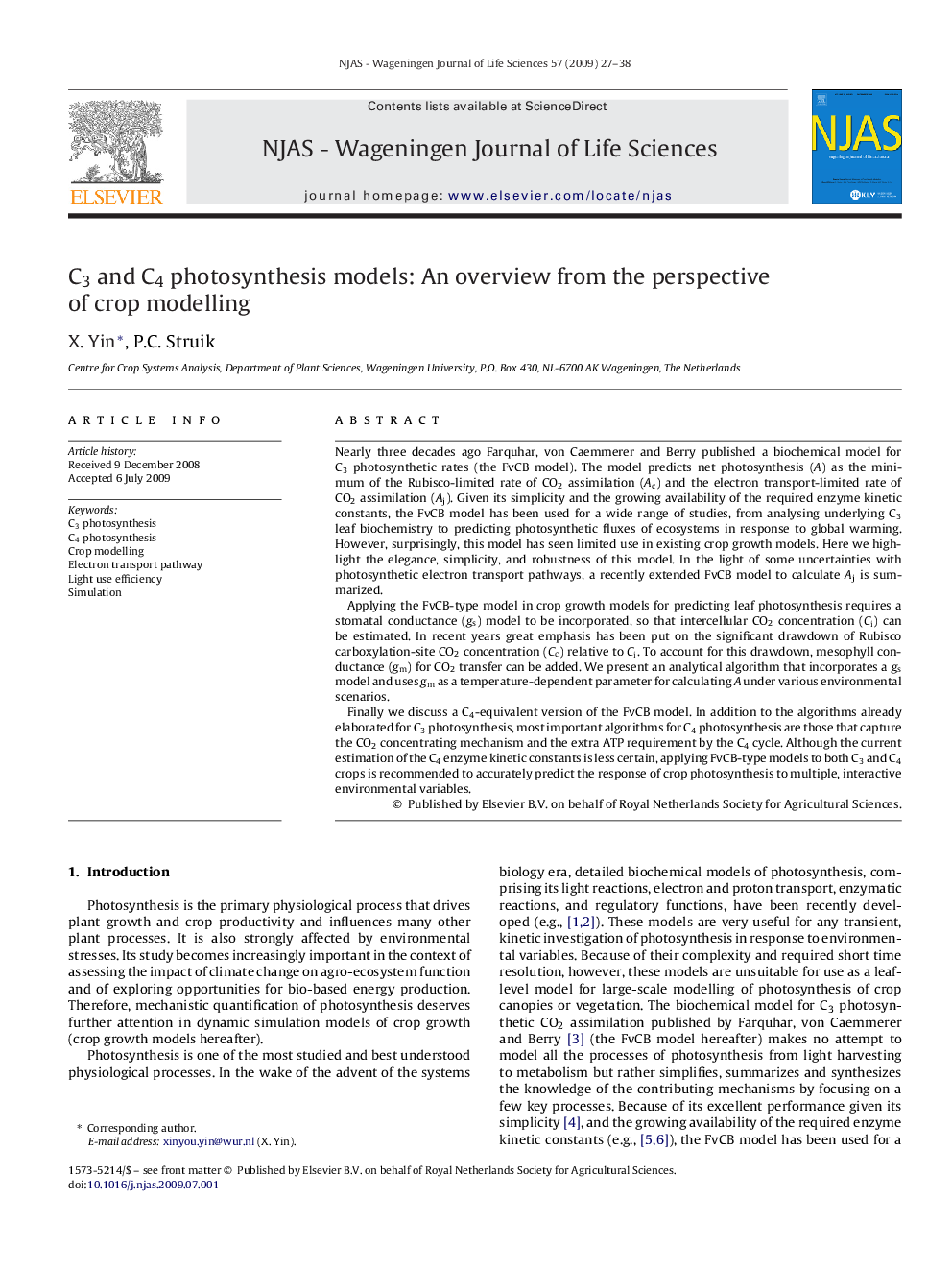| Article ID | Journal | Published Year | Pages | File Type |
|---|---|---|---|---|
| 4501387 | NJAS - Wageningen Journal of Life Sciences | 2009 | 12 Pages |
Nearly three decades ago Farquhar, von Caemmerer and Berry published a biochemical model for C3 photosynthetic rates (the FvCB model). The model predicts net photosynthesis (A) as the minimum of the Rubisco-limited rate of CO2 assimilation (Ac) and the electron transport-limited rate of CO2 assimilation (Aj). Given its simplicity and the growing availability of the required enzyme kinetic constants, the FvCB model has been used for a wide range of studies, from analysing underlying C3 leaf biochemistry to predicting photosynthetic fluxes of ecosystems in response to global warming. However, surprisingly, this model has seen limited use in existing crop growth models. Here we highlight the elegance, simplicity, and robustness of this model. In the light of some uncertainties with photosynthetic electron transport pathways, a recently extended FvCB model to calculate Aj is summarized.Applying the FvCB-type model in crop growth models for predicting leaf photosynthesis requires a stomatal conductance (gs) model to be incorporated, so that intercellular CO2 concentration (Ci) can be estimated. In recent years great emphasis has been put on the significant drawdown of Rubisco carboxylation-site CO2 concentration (Cc) relative to Ci. To account for this drawdown, mesophyll conductance (gm) for CO2 transfer can be added. We present an analytical algorithm that incorporates a gs model and uses gm as a temperature-dependent parameter for calculating A under various environmental scenarios.Finally we discuss a C4-equivalent version of the FvCB model. In addition to the algorithms already elaborated for C3 photosynthesis, most important algorithms for C4 photosynthesis are those that capture the CO2 concentrating mechanism and the extra ATP requirement by the C4 cycle. Although the current estimation of the C4 enzyme kinetic constants is less certain, applying FvCB-type models to both C3 and C4 crops is recommended to accurately predict the response of crop photosynthesis to multiple, interactive environmental variables.
